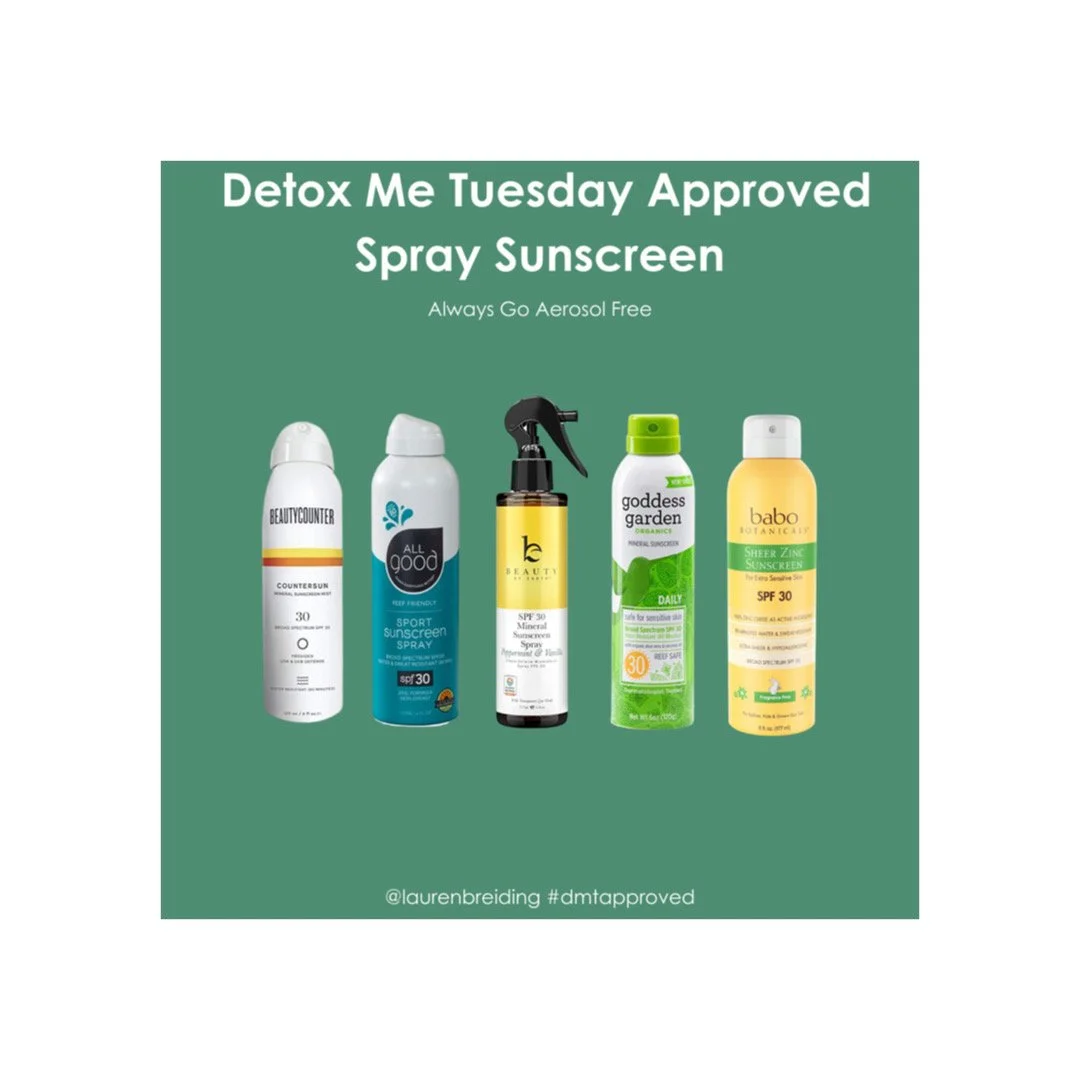Common Sunscreen Myths
I love educating on sunscreen because there is usually a lot of movement in the recognition of safety by the time a year passes. This year I thought I’d talk about the top sunscreen myths. Read THIS POST for physical sunscreen basics.
Myth #1: The higher the SPF, the longer I can go without applying sunscreen.
False! SPF stands for “sun protection factor” which refers to the amount of the suns rays it would take to burn unprotected skin.
This number only refers to the protection from UVB or burning rays.
SPF SPF 15 protects from 93% of UVB rays
SPF 30 protects from 97% of UVB rays
SPF 50 protects from 98% of UVB rays
So SPF refers to the amount of UVB rays that are being blocked. It does not mean you can go a longer amount of time without sunscreen. It is still necessary to reapply every 2 hours.
Note: do not fall for the marketing schemes of sunscreen with extremely high SPF numbers. It is not providing you anymore protection.
Make sure you are using a broad spectrum sunscreen to protect against UVB (burning rays) and UVA (free radical causing aging rays). Added bonus, find one that also blocks from blue light (oxidizing aging rays.) My favorite broad spectrum + blue ray blocking sunscreen is HERE.
Myth #2: All sunscreen works the same way
False! There are two different types of sunscreens
Chemical Sunscreen: absorbs UV radiation into your skin and the chemical bonds break down rays and release them as heat. Chemicals that filter include oxybenzone and avobenzone. Both of these are known to irritate the skin and oxybenzone has been named the culprit of harming our coral reefs and oceans.
Physical or Mineral sunscreen: physically blocks the rays from your skin by using mineral components like zinc oxide or titanium dioxide to reflect the suns rays. This makes it really safe for sensitive skin, babies and kids.
Myth #3: As long as I’m protecting my skin from the sun I shouldn’t worry about ingredients.
False! As you can see from the post above there are two different types of ingredients. In fact, the FDA has just stated that only two are considered safe for use: zinc oxide and titanium dioxide.
Not only do ingredients like oxybenzone and avobenzone have serious affects on the coral reefs (Hawaii has banned sunscreens with these ingredients), but they are known endocrine disruptors.
Sunscreen is a product that is sitting on your skin and getting reapplied daily in the summer which means it is a great place to start switching to safer.
The active ingredients list are a great place to start screening your SPF. If it has anything besides titanium dioxide or zinc oxide you can put it back.
If the active ingredients are zinc oxide or titanium dioxide the next step is to move down to the inactive ingredients list and start by scanning for these three things: parabens, fragrance/parfum, PEG compounds.
Myth #4: I need a different sunscreen for my face/kids and babies/for sweating or swimming
False! This is a marketing scam that does not need to take money from your wallet.
The word “waterproof” is not regulated by the FDA so anyone can make that claim if they want. Pay attention to the water resistant wording and always reapply after sweating or swimming.
Labeling a sunscreen is “face sunscreen” is also a marketing move. (This does not include tinted moisturizer or daily moisturize with SPF.) It is not necessary to purchase a different formula for your face.
If you are using a safe sunscreen on yourself, you do not need to buy a separate one for kids or babies. In fact I just researched a common “safe” brand and their baby formula was actually the only safe one and the adult formula used all chemical ingredients.
The value in finding a safe, high performing sunscreen is finding one that works for the whole family in any situation. Your welcome wallet!
Myth #5: A good sunscreen is all I need to protect from the sun
While sunscreen is a must during the summer months (on your face all year round!), remember to take breaks and throw on a shirt to give your skin a break. This is the best way to truly not get a sunburn.
I have grown to find joy in my pale skin after I come inside from sitting in the shade and wearing a safe, high performing sunscreen. Shop my favorite HERE.
See images below for approved sunscreen brands. Note: These are brands that every single sun product they offer is safe to my standards. There are other common sunscreen brands that are known to be “safe,” but in fact have some formulas that are not (Sun Bum, Supergoop, Babyganics, etc.) This is meant to be a resource so that you don’t have to think when you need sunscreen!











